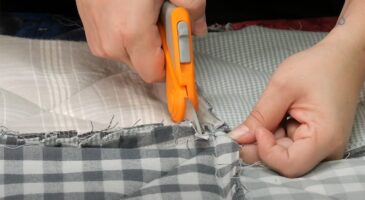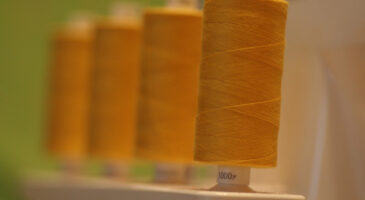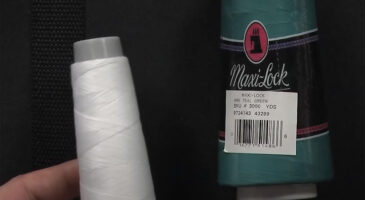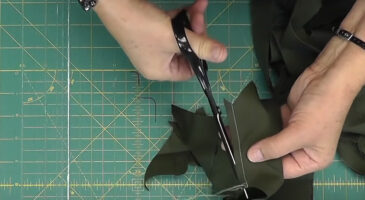Quick Navigation
Since time immemorial, people have been adopting different ways of making patterns on fabrics. But unfortunately, due to the rapid development in the fabric-making industry, most of these ancient pattern-making styles have become oblivion, with only a few making it to the modern world.
One of the few that has been able to stand the test of time is the Batik technique.
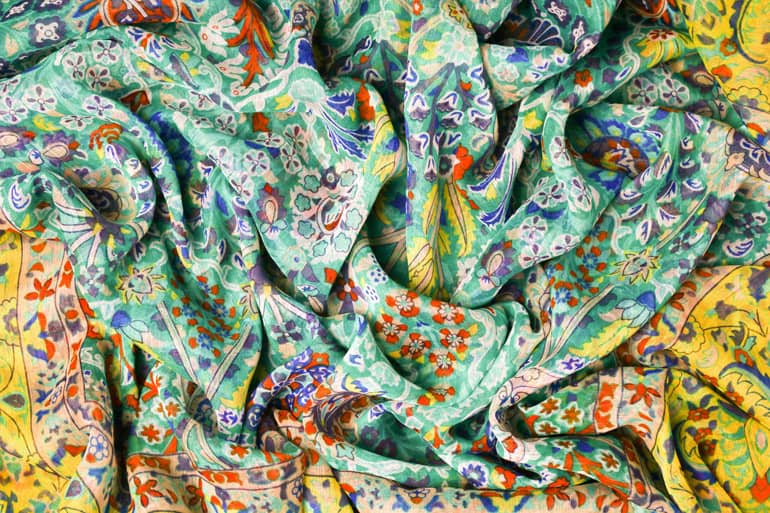
The Baltik technique involves the use of wax to prevent dye from covering patterns made on fabrics during application.
With the recent popularity enjoyed of this technique in recent time, people are becoming more interested in Batik art and want to know is Batik hard to sew. Do Batik fabrics shrink? If you have also found this fabric complicated, then this helpful article will help you!
Are Batik fabrics hard to sew?
Yes, it is hard to sew Batik fabric. Batik fabrics, unlike others, are put through too much stress during the production process, and they are also made with much tighter weaves; all these procedures make the fabric tough.
So if you want to sew them, they can sometimes be stiff to work with and hard to sew through.
Do Batik fabrics shrink?
Yes, Batik fabrics shrink. Batik is made of natural fibre and with natural dyes; therefore, just like every other natural fibre material like cotton, they also shrink: Batik fabric shrinks 3″ per yard. And because of this, it would help if you could wash Batik fabrics before you start to sew them to prevent your final product from shrinking after washing them.
How to soften Batik fabric
There are two major techniques you can use to soften your hardened Batik fabric: it is either you soak them in tepid water, or you press them with a steam iron. Check below for details on how these methods can be applied.
1. Softening with a steam iron
- Set your steam iron on high heat and press your Batik fabric with it to help soften the fabric.
- Do this for at least 2 to 5 minutes so that even if it softens, the fabric will retain its shape.
- Iron the cloth again, but this time around, put the iron on medium heat setting. This will help you get rid of folded parts of the fabric.
- If after step 3 the fabric remains hard, set the iron back to high heat and iron over the fabric surface again.
2. Softening with tepid or lukewarm water
In a bathtub or bowl, pour enough warm water and soak your Batik fabric in it for several minutes, and iron afterward.
How many Batik are there?
Majorly, there are 4 types of Batik: Batik blok, Batik Lukis, Batik skin, and Tie-dye Batik. However, we have over 3000 Batik patterns.
What are the hardest fabrics to sew?
The hardest fabrics to sew are knits, leather, and sheer fabrics.
Is Batik a tightly woven fabric?
Yes, Batik is a tightly woven fabric. Batik is made with a tighter weave compared to some other types of fabrics, and that is why they usually feel heavier and harder to work with because of their stiffness.
Also, because they are so tightly woven, you will need sharp needles to be able to penetrate their fibre.
Is Batik fabric good for quilting?
Yes, Batik fabric is good for quilting. Batik fabric is made of 100% cotton, so it will make an excellent choice for quilting. Asides from that, they are naturally a quilting material; their texture, looks, and feel is also an important quality that makes them ideal for quilting projects.
For a beautiful quilting design, you can either use Batik bright vibrant paint alone, or you can mix the fabric with other complementing ones.
How to identify Batik fabric
1. Compare both the wrong side and the right side of the fabric
One key factor that distinguishes a Batik fabric from other printed fabrics is that both sides of the fabric are the same in terms of vibrancy. This means it doesn’t matter whether you are wearing your Batik cloth inside out or the right way; no one will notice unless you tell them.
This is because Batik fabrics are designed in such a way that the dye used in the making process will penetrate both sides of the fabrics having similar effects on both sides.
Therefore, if you check the two sides of your Batik fabric and one seems bright, and the other looks faded, like the wrong side of printed fabric, then the Batik fabric is fake.
2. The feel of the fabric
To make an authentic handmade Batik fabric, designers make use of fibrous fabrics like linen, silk, jute, or cotton. Whereas most fabrics designed to mimic the original Batik designs ate made using synthetic materials like polyester, nylon, or rayon. Therefore, just by feeling the materials, you can readily tell the difference between an original and fake Batik.
3. Watch out for inconsistencies in the design pattern
Machine-made products or machine-printed patterns can be readily identified with the level of consistency in the pattern and their perfection.
Consequently, since the perfection of a handmade pattern like the Batik depends on some factors like the precision of the designer, the wax temperature, several times dye is applied, and so on, there’s bound to be some element of imperfection in the design.
Therefore, to tell the difference between original and fake, look for signs of inconsistency in the designs of the fabric.
Useful tips on how to sew Batik fabric
- Even though Batik fabric is 100% cotton, they are made with a tighter weave, therefore, to make sewing these fabrics easier for you, make use of sharp and fine needles for easy gliding through the fabric.
- Make use of fine threads of about 50 to 60 weight. Although this is only necessary if you notice your stitches are too apparent on the face of the fabric.
- Although Batik shrinks during the production process, that doesn’t mean they wouldn’t shrink. Therefore it is best to prewash them before sewing.
- Batik fabrics do not have wrong or right sides; both sides look the same, so you may find it challenging to choose which side to use for the right or wrong side. To determine the right side, look at the edge of the designs of both sides; the side that has more blurry design edges is the wrong side.
